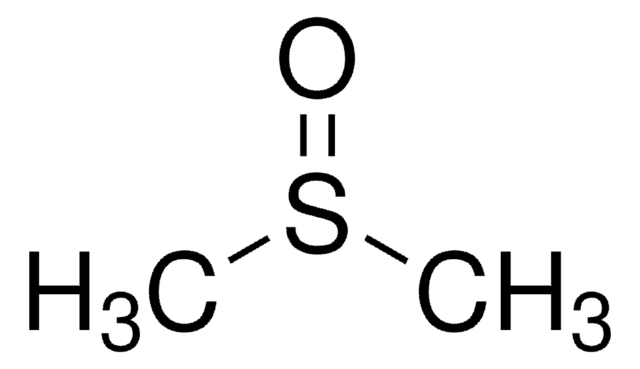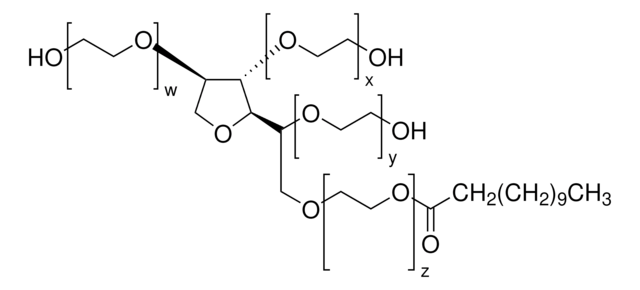T2788
Trizma® hydrochloride solution
pH 7.6, 1 M
Synonym(s):
Tris hydrochloride solution
Sign Into View Organizational & Contract Pricing
All Photos(1)
About This Item
Recommended Products
grade
for molecular biology
sterility
0.2 μm filtered
form
solution
concentration
1 M
impurities
DNase, RNase, NICKase and protease, none detected
pH
7.6
application(s)
diagnostic assay manufacturing
SMILES string
Cl.NC(CO)(CO)CO
InChI
1S/C4H11NO3.ClH/c5-4(1-6,2-7)3-8;/h6-8H,1-3,5H2;1H
InChI key
QKNYBSVHEMOAJP-UHFFFAOYSA-N
Looking for similar products? Visit Product Comparison Guide
Application
The pH values of all buffers are temperature and concentration dependent. For Tris buffers, pH increases about 0.03 unit per degree C decrease in temperature, and decreases 0.03-0.05 unit per ten-fold dilution.
For precise applications, use a carefully calibrated pH meter with a glass/calomel combination electrode.
For precise applications, use a carefully calibrated pH meter with a glass/calomel combination electrode.
Other Notes
Prepared with pH-adjusted Biotechnology Performance Certified Trizma Base in 18 megohm water and 0.2 μm filtered.
Legal Information
Trizma is a registered trademark of Merck KGaA, Darmstadt, Germany
Storage Class Code
10 - Combustible liquids
WGK
WGK 2
Flash Point(F)
Not applicable
Flash Point(C)
Not applicable
Personal Protective Equipment
dust mask type N95 (US), Eyeshields, Gloves
Regulatory Information
新产品
Choose from one of the most recent versions:
Already Own This Product?
Find documentation for the products that you have recently purchased in the Document Library.
A multiomic approach to characterize the temporal sequence in Alzheimer's disease-related pathology.
Mikael Marttinen et al.
Neurobiology of disease, 124, 454-468 (2018-12-18)
No single-omic approach completely elucidates the multitude of alterations taking place in Alzheimer's disease (AD). Here, we coupled transcriptomic and phosphoproteomic approaches to determine the temporal sequence of changes in mRNA, protein, and phosphopeptide expression levels from human temporal cortical
Anne-Laure Hemonnot-Girard et al.
Brain, behavior, and immunity, 91, 404-417 (2020-11-17)
Microglia, the resident immune cells of the brain, have recently emerged as key players in Alzheimer Disease (AD) pathogenesis, but their roles in AD remain largely elusive and require further investigation. Microglia functions are readily altered when isolated from their
Our team of scientists has experience in all areas of research including Life Science, Material Science, Chemical Synthesis, Chromatography, Analytical and many others.
Contact Technical Service






